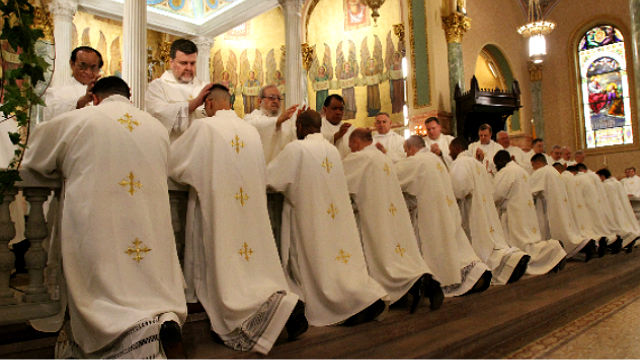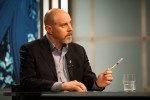

Deacon-structing Vocations: Ordained life part 2
Deacon Pedro
Sunday, December 14, 2014

Last week we looked at the Vocation to the Ordained Life and the Sacrament of Holy Orders. The tradition of the priesthood is not specific to Christianity and our tradition dates back to the early days of Judaism.
God’s chosen people, the people of Israel, was considered a “kingdom of priests and a holy nation”, but within the people of Israel God chose one of the twelve tribes, that of Levi, and set it apart for liturgical service. God said to Moses: “Consecrate your brother Aaron and his sons Nadab, Abihu, Eleazer and Ithamar, to be priests, to minister to me.” (Exodus 28:1) Part of their job was to take care of the Tabernacle, the holy place where they kept the Ark of the Covenant, which contained the Tablets of the 10 Commandments. Jewish people believed that the Holy of Holies (God) resided in the Tabernacle. The priest’s job was to act on behalf of the people in relation to God, to offer gifts and sacrifices for sins. When Jesus came, he became the ultimate priest, who offered the ultimate sacrifice. So, we see Aaron’s priesthood as the priesthood of the first covenant and Jesus is the priest and only priest of the new covenant. All priests participate in this one priesthood of Jesus Christ.
As you know from your Grade-8 catechism, Sacraments are outward signs instituted by Christ, of inward Grace. So when did Jesus institute the Sacrament of Holy Orders?
There are many places in the scriptures that could be used to show Christ instituting the priesthood: the sending out of the 70 (some translations say 72), when he sent them two-by-two (Luke 10:1-17); then there’s Pentecost (Acts 2:1-13), which is definitely the birthday of the Church, when the Holy Spirit descended on the apostles like tongues of fire; but I think that the passage that best describes the institution of the priesthood (and diaconate) is this one: The Washing of the Feet: After he had washed their feet, he said to them, “Do you know what I have done to you? You call me teacher and lord- and you are right, for that is what I am. So if I your lord and teacher, have washed your feet, you also ought to wash one another’s feet. For I have set you an example, that you should also do as I have done to you.” (John 13:12-15) So, a priest is first a servant (a deacon), a foot-washer, and his job is to serve the Church.
Just as those living the Religious Life can belong to an order, so can a priest or bishop also belong to a contemplative order, like the Franciscans or Benedictines. Or they can be missionaries like the Oblates of Mary Immaculate. There are many Religious Congregations that also have priests, but a priest can be consecrated to his Bishop, in which case he would be a diocesan priest (belonging to a diocese as opposed to a religious congregation). All permanent deacons make a vow of obedience to the diocesan bishop. Priests who belong to religious congregations take the vows of poverty, chastity and obedience. Diocesan priests make promises of celibacy and obedience.
Next week, let’s look at the promise of celibacy and also the idea of ordination of women.


Every week, Deacon Pedro takes a particular topic apart, not so much to explore or explain the subject to its fullness, but rather to provide insights that will deepen our understanding of the subject. And don’t worry, at the end of the day he always puts the pieces back together. There are no limits to deaconstructing: Write to him and ask any questions about the faith or Church teaching: [email protected]
Related Articles:
<<













